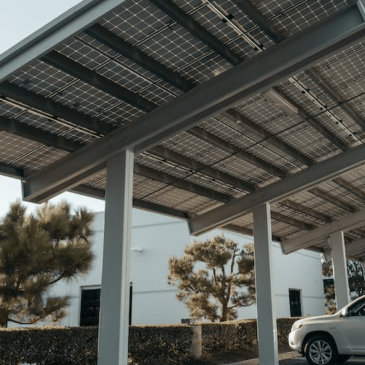Residential Solar Power Storage: What You Can Do
One of the beautiful things about solar power is that every homeowner can get as little or as much solar energy as they want. Some may only want solar to help reduce their energy bills, so they can have a basic system without storage installed to supply their homes with electricity during the day and then rely on grid-produced power at night.
Meanwhile, others may want a more energy independent system that allows them to unplug their homes from the national grid entirely. For this type of system, solar storage would be required to ensure their systems can supply them with the power they need during the evening hours. If you are the latter, then understanding your storage options is essential for building the perfect solar system for your home. Here’s our guide to solar storage.
Top Considerations When Choosing Solar Storage
Not all solar batteries are the same. Today, solar customers can choose from a few main options, including flooded lead acid, sealed lead acid, and lithium-ion phosphate batteries. Here’s a quick breakdown of each:
Flooded Lead Acid Batteries
Flooded lead acid batteries are the cheapest solar battery option available, often costing as low as $100. While that price point may be highly attractive, it is important to know that this type of battery requires the most maintenance. Just like the flooded lead batteries that used to be in cars, you need to regularly check the battery’s water levels with a hydrometer and add water to keep them topped off when necessary. These batteries also emit gases when in use, so they need to be kept in a room with very good ventilation.
Sealed Lead Acid Batteries
Unlike flooded lead acid batteries, sealed lead acid batteries are spill-proof and require little to no maintenance. They contain either absorbed glass matt (AGM) or silica gel. Of the two types, AGM has a better temperature range and is slightly cheaper. Gel batteries last longer and can be mounted in any orientation, but they take longer to recharge. Both types have a much longer lifespan than flooded lead acid batteries. But these benefits don’t come without cost, as this type of battery can cost more than double, or even quadruple, the cost of flooded lead acid batteries, typically averaging between $239 and $450 each.
Lithium-Ion Phosphate Batteries
Lithium iron phosphate batteries offer the most efficient solar storage option available. They have the longest lifespan of all the battery types, and they have the highest discharge and recharge rates. Unlike the other two batteries on this list, lithium-ion batteries can be depleted up to 80% without causing any damage to the batteries. They are incredibly compact and lightweight and require little to no maintenance at all. For all their benefits, they are the most expensive type of battery available, with some high-end models costing as high as $1,500 apiece.
Top Considerations When Choosing Solar Storage
Each of the three types of batteries have their own pros and cons and they can vary significantly in price, capacity, voltage, and cycle life. Here’s what to consider when shopping for solar batteries for your home.
- Price: Lead acid batteries are the cheapest type of solar storage available, with some batteries costing as low as $100 while lithium-ion batteries are the most expensive, often costing more than $1,500 per battery. While price does play a big role for many homeowners, it is important to consider the battery’s efficiency and ultimate lifetime in addition to its upfront costs. The cheapest batteries aren’t always the best value. In fact, they never are.
- Capacity: Battery capacity is important because this is what tells you how much energy the battery can store. If your goal is to power all your home’s appliances for long periods of time, then you will need as many batteries as necessary to handle the load.
- Voltage: For your solar storage system to work safely and as intended, you need your battery bank and solar panels to operate on the same voltage. With solar panels available in either 12V, 24V, or 48V options, you will want to know what your panels are rated for before choosing your batteries.
- Cycle Life: Over time a battery’s performance will gradually decline. Its cycle life is what will tell you roughly how long that will be. This rating specifies the number of discharge and charge cycles a battery can go through before its capacity drops below the capacity it is rated for.
How Many Solar Batteries Will You Need?
How many batteries you will need ultimately depends on your energy usage, how much of it you want to come from your solar system, and how much you want to store. On your electric bill, you will find your energy usage measured in kilowatt hours. If you determine that you need 1,000 watts for 8 hours per day, then you need your solar system provide you with 8 kWh per day.
Since the average solar battery capacity is 10 kWh, you would think that you would be able to get away with purchasing one battery for your household. But that isn’t always the case. If you choose a flooded or sealed lead acid battery, then these batteries cannot be discharged below 50%. So, a 10-kWh battery really only provides 5 kWh of usable energy. Thus, you would need two of these batteries.
Since a lithium-ion battery can be discharged up to 80%, you could realistically get away with one battery, but you would be cutting it very close to the battery’s capacity limitations.

